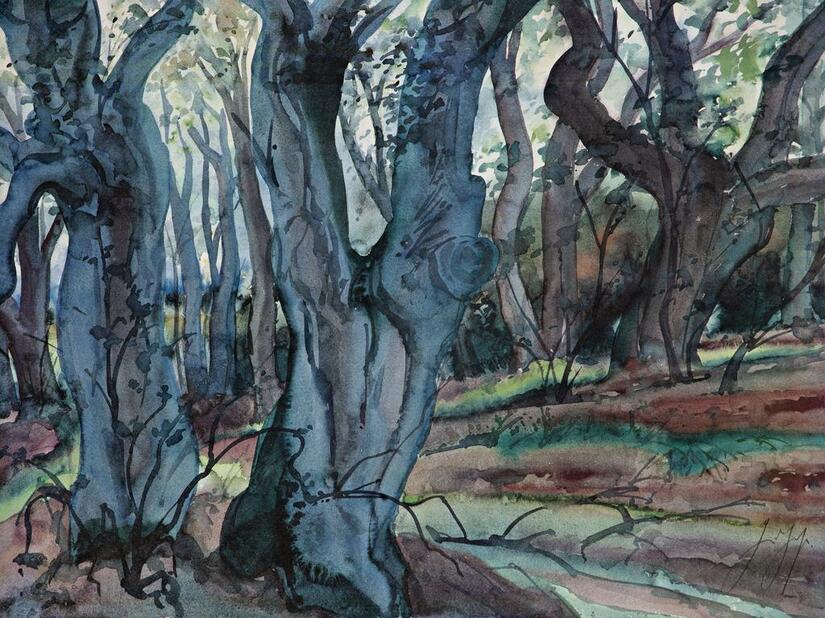Günter Grass: Waldlandschaft II, 2000 (Forest Landscape II)

Algraphy, 103 x 84 cm
With "Waldlandschaft II" (Forest Landscape II) the Europäische Akademie Otzenhausen owns a work by a Nobel Prize winner for literature. A less-known fact: Günter Wilhelm Grass (*1927 in Danzig-Langfuhr, today Gdańsk, Poland, †2015 in Lübeck, Germany) is not only a great author of German post-war literature (debut: "The Tin Drum", 1959), but also a sculptor, painter and graphic artist. Before turning to literature in 1956/57, he had studied graphic art and sculpture in Düsseldorf and Berlin. In 1999 Grass was awarded the Nobel Prize for Literature, the highest distinction in this field. His books were translated into many languages, some of them filmed.
In addition to his artistic work, the political intellectual Grass also raised his voice to comment on current political issues. He was a convinced democrat and committed politician who was particularly concerned with coming to terms with the past - the Second World War. The fact that he himself served in the Waffen-SS (1944) and only late realized the true character of the murderous ideology of the National Socialists caused discussions.
However, his work was not only directed at (coming to terms with) the past, but he was also a moral authority of civil society with a view to the future. This also included his commitment to the Deutsche Umweltstiftung (German Environmental Foundation), which he founded in 1982 together with other personalities from political and public life and helped to build up over the years. The motto of this independent, large German civic foundation is "Hope through Action". It is committed to the preservation of the natural habitats of our planet.